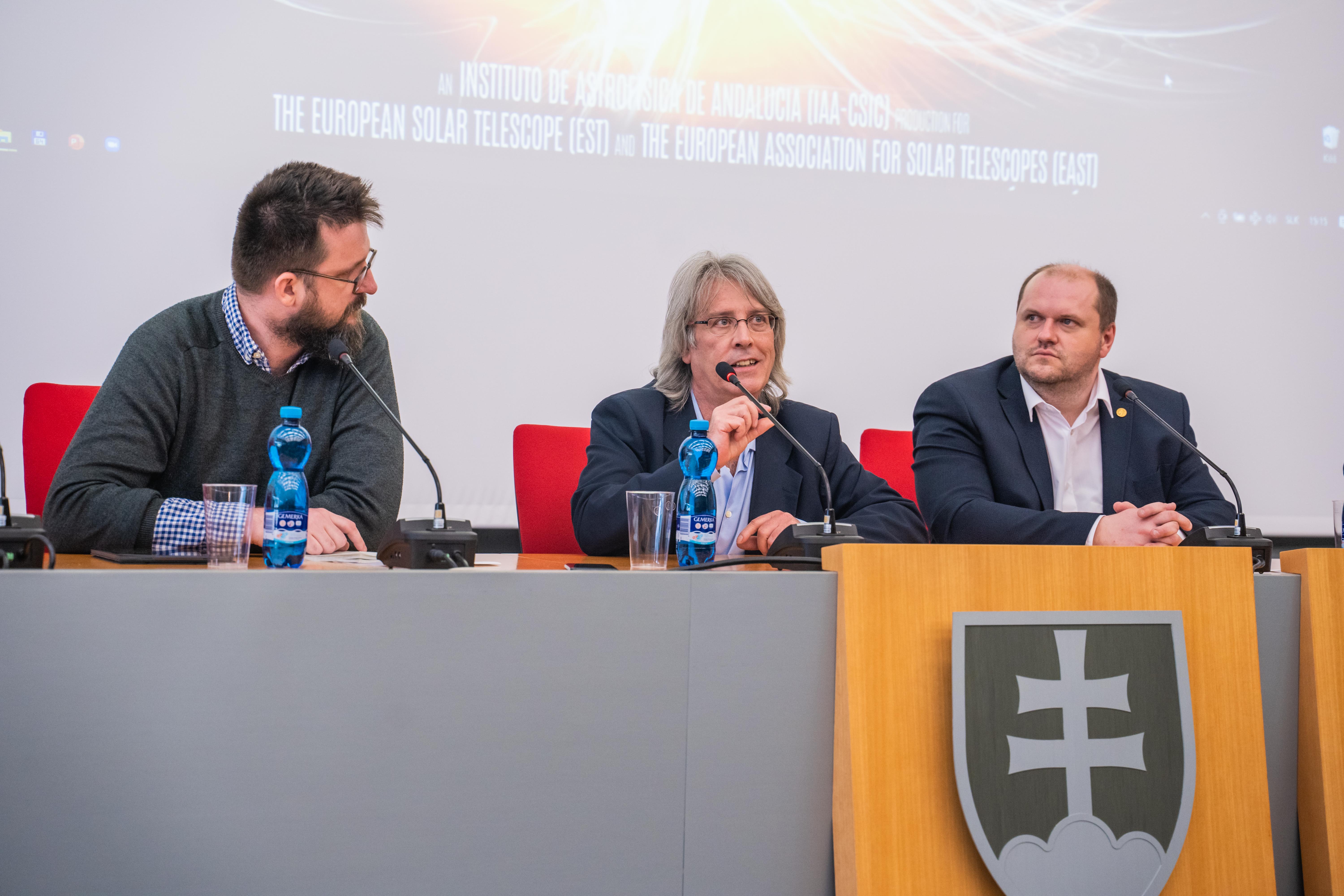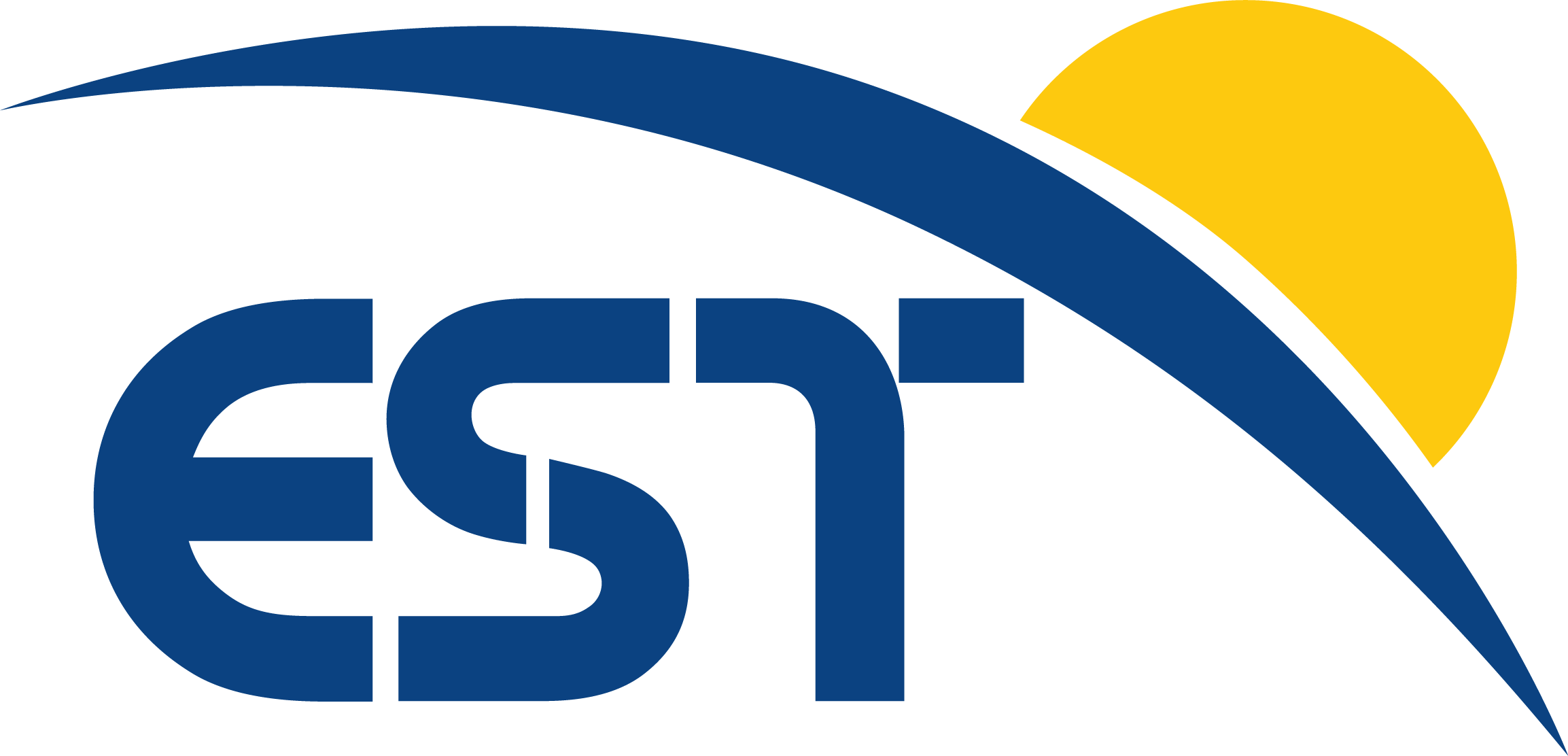The Spanish National Research Council and the Slovak Academy of Sciences hosted events to present the project to representatives of their respective governments, scientific and industrial communities. The EST documentary “Reaching for the Sun” was also premiered during the events.
 State Secretary for Research, Raquel Yotti, addressing the audience at the EST presentation in Madrid. Credit: Vinca Page /CSIC
State Secretary for Research, Raquel Yotti, addressing the audience at the EST presentation in Madrid. Credit: Vinca Page /CSIC
The European Solar Telescope was presented to the Spanish Ministry of Science and Innovation and the scientific and industrial communities on May 3, 2022. The act was held at the Residencia de Estudiantes, an iconic place for the history of Science and Culture in Spain, managed by the National Research Council (CSIC). Antxon Alberdi, director of the Instituto de Astrofísica de Andalucía (IAA-CSIC) conducted the event.
The audience was welcomed by Ángeles Gómez Borrego, CSIC Vice-President for International Affairs and member of the EST Board of Directors. She highlighted the importance of the EST project for the solar research community in Spain and more broadly in Europe. She confirmed the strong support of CSIC to this project.
Manuel Collados and Luis Bellot briefly described the project and the main scientific goals of the European Solar Telescope. The role of the two Spanish institutions in the consortium, the Instituto de Astrofísica de Canarias (IAC) and the Instituto de Astrofísica de Andalucía (IAA-CSIC), was highlighted, as well as the contributions of the Spanish industry to the EST design.
Next, the EST documentary “Reaching for the Sun” was premiered. The film director, Emilio García (IAA-CSIC), presented this journey through 400 years of history of solar astronomy in Europe, from Galileo to several state-of-the-art observatories across Europe. A path that leads to the next step of the journey: the European Solar Telescope. He thanked the film crew and production/post-production teams for their work. The film was acclaimed by the audience and authorities alike.
Inmaculada Figueroa, Deputy Director General for the Internationalization of Science and Innovation and ESFRI Vice-chair, recalled that only a few projects have been supported by Spain for inclusion in the ESFRI Roadmap, and the European Solar Telescope is one of them.
Closing the act, the State Secretary of Research of the Spanish Ministry of Science and Innovation, Raquel Yotti, highlighted that EST is an inspiring project for future scientific challenges. Yotti pointed out that the European Solar Telescope was an example of collaboration, not only between scientific institutions and countries, but also with industry, making it possible to foster technological innovation.
Yotti stressed the importance of long- time projects, “to get further and to reach goals that seemed impossible a few years ago”.
The event was well attended by leading authorities of the Spanish scientific community, including the president of the Spanish Astronomical Society, Benjamín Montesinos, the coordinator of the Spanish Network of Astronomical Infrastructures, Martín Guerrero, and representatives of the Centre for Technological and Industrial Development (CDTI), among others.
The presentation attracted the attention of the Spanish media, which covered the event thoroughly. The EST representatives were interviewed by several press, TV and radio journalists, and their declarations reached wide national diffusion.
 Manuel Collados, Peter Gömöry, and moderator Otakar Horák during the discussion held in Bratislava on May 10. Credit: SAS
Manuel Collados, Peter Gömöry, and moderator Otakar Horák during the discussion held in Bratislava on May 10. Credit: SAS
“Reaching for the Sun” premiere in Bratislava
On May 10, 2022, the EST documentary Reaching for the Sun – The Story of a Magnetic Star was premiered in Bratislava (Slovakia), in an event held at the main headquarters of the Slovak Academy of Sciences (SAS).
Slovak scientists from the Astronomical Institute of the SAS have a prominent role in the film, where they highlight the importance of the coronographic observations carried out at Lomnický štít. On this occasion, the EST coordinator Manuel Collados (IAC) and the head of the EST Communication Office and executive producer of the film, Luis Bellot (IAA-CSIC), visited Bratislava. The premiere was followed by a discussion with Manuel Collados and Peter Gömory, the director of the Astronomical Institute of the SAS, who took questions from the audience.
“The European Solar Telescope is a planned revolutionary instrument aimed at studying the basic processes on the Sun - our star, which dominates active phenomena and physical conditions in the heliosphere and thus directly affects the Earth's biosphere” explained Peter Gömöry, who added that it will be the largest solar telescope in Europe, with a primary mirror 4.2 metres in diameter.
In his introductory speech, the president of the SAS, Prof. Pavol Šajgalík, emphasised that we are at the beginning of a new chapter in the study of the Sun from Europe. “I am very glad that the Astronomical Institute of the SAS has been involved in this project. In addition to achieving very good results, the institute also has a long history of research in the field of solar physics”.
Addressing the students in the audience, he added “Science is a very exciting journey that I recommend to each one of you, and if you want to be part of it, study physics, mathematics, technical and natural sciences. I hope this film will convince you that it's worth it.”
Twenty three scientific institutions from 16 European countries are currently involved in the EST project. They operate key solar infrastructures such as GREGOR, THEMIS, SST, and VTT in the Canary Islands, and the iconic Einstein Tower in Germany. The coronal station at Lomnický štít is an integral part of these facilities. According to Peter Gömöry, “It is the only functional workplace of its kind in Europe. As EST will not be optimised for solar corona observation, coronographs at Lomnický štít will always be considered an important part of comprehensive solar research in Europe”.
The event was closed with a reception offered by the Spanish Ambassador to Slovakia, Ms. Lorea Arribalzaga Ceballos, to the president of the SAS, Prof. Pavol Šajgalík, the vice-president of SAS for International Relations, Dr. Zuzana Panczová, the director of the Astronomical Institute of the SAS, Dr. Peter Gömory, and the representatives of the EST team, Prof. Manuel Collados and Dr. Luis Bellot. The Ambassador and the president of the SAS agreed to meet in the near future to monitor the scientific collaborations between Spain and Slovakia, with a focus on the European Solar Telescope project.
